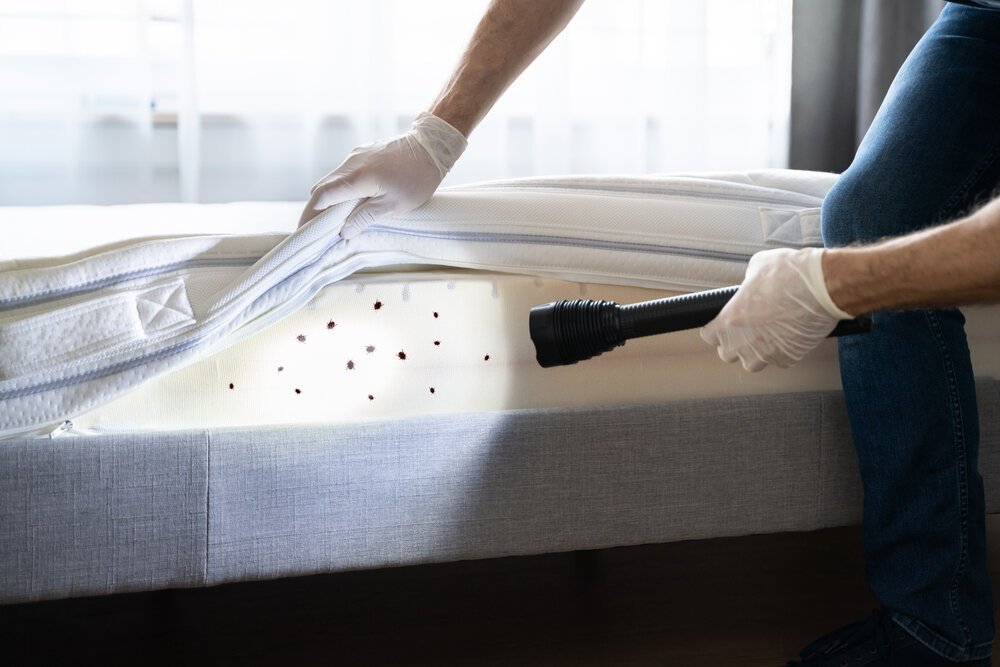Trusted EZ Pest Control Chicago Solutions for a Pest-Free Home
Trusted EZ Pest Control Chicago Solutions for a Pest-Free Home
Blog Article
The Ultimate Bed Bug Therapy Handbook: Expert Insights and Recommendations
The mission for effective bed pest therapy techniques has led to a myriad of suggestions and options, some more reliable than others. From recognizing bed insect behavior to implementing prevention methods and determining infestations, this comprehensive overview aims to equip visitors with the knowledge required to tackle bed pest problems effectively.

Understanding Bed Bug Actions
Recognizing the complex behavioral patterns of bed bugs is important for efficient insect control strategies. Bed pests, clinically known as Cimex lectularius, are tiny, reddish-brown parasitic pests that eat the blood of humans and pets. These nocturnal parasites are skilled at hiding in fractures and crevices near their hosts' resting areas, making them testing to spot and get rid of.

Effective Prevention Techniques
To efficiently deal with the spread of bed pests, executing positive prevention techniques is vital in maintaining a pest-free setting. Among the crucial avoidance techniques is to consistently check and clean locations where bed insects can hide, such as bed linens, furniture, and splits in walls. In addition, decreasing clutter in living spaces can decrease possible hiding places for these insects. Securing cracks and holes in walls, floorings, and furniture can also help protect against bed pests from entering the premises. Utilizing safety covers on mattresses and box springs can serve as an obstacle against bed pests. When purchasing used furnishings or garments, inspecting products thoroughly before bringing them right into the home is important in stopping bed bug infestations. In addition, exercising good hygiene and lessening the threat of direct exposure to bed pests in public areas can help in prevention efforts. By integrating these preventive steps into regular home regimens, individuals can dramatically lower the likelihood of bed bug problems.
Identifying Bed Bug Infestations
Upon getting in an area thought of a bed pest infestation, one may see small red or brown spots on bedding or furniture, suggesting the visibility of these parasites. One more usual indicator of a bed insect problem is the visibility of molted exoskeletons shed by growing bed insects.
A musty odor in the room could also show the visibility of bed insects, as these bugs release scents that lead to a distinctive odor. Evaluating fractures and holes in furnishings, wall surfaces, and mattress joints might expose actual bed pests, which are reddish-brown, oval-shaped pests concerning the dimension of an apple seed. Understanding these indicators is essential for very early discovery and reliable therapy of bed insect invasions.
Recommended Therapy Approaches
Efficient bed bug treatment techniques count on a combination of extensive assessment, targeted extermination, and preventative procedures to eradicate invasions properly. The very first action in dealing with bed pests is a thorough evaluation to identify the degree of the problem. This typically includes analyzing locations where bed pests are likely to hide, such as cushion joints, furnishings joints, and electrical outlets. Once the problem is confirmed, targeted elimination techniques can be utilized. Common methods consist of using insecticides, heat home treatments, or cold techniques to kill bed pests in any way life stages. It is necessary to adhere to the directions offered by bug control specialists when utilizing these methods to guarantee security and effectiveness.
Along with extermination, preventative measures play a critical role in stopping future problems. This includes on a regular basis cleansing and decluttering living spaces, sealing splits and crevices where bed bugs can hide, and making use of mattress encasements to shield against invasions. By incorporating comprehensive assessment, targeted elimination, and safety nets, people can effectively fight bed insect invasions and preserve a bed bug-free setting.
Maintaining a Bed Bug-Free Environment
After executing effective bed bug therapy approaches, keeping a bed bug-free environment needs consistent caution and aggressive actions to prevent future infestations. Encasing bed mattress and box springs with bed bug-proof covers can stop any type of staying bed insects from getting away or brand-new ones from infesting. Securing fractures and gaps in walls, furniture, and other prospective hiding spots can limit bed bug movement and prevent infestations.
Verdict

Report this page